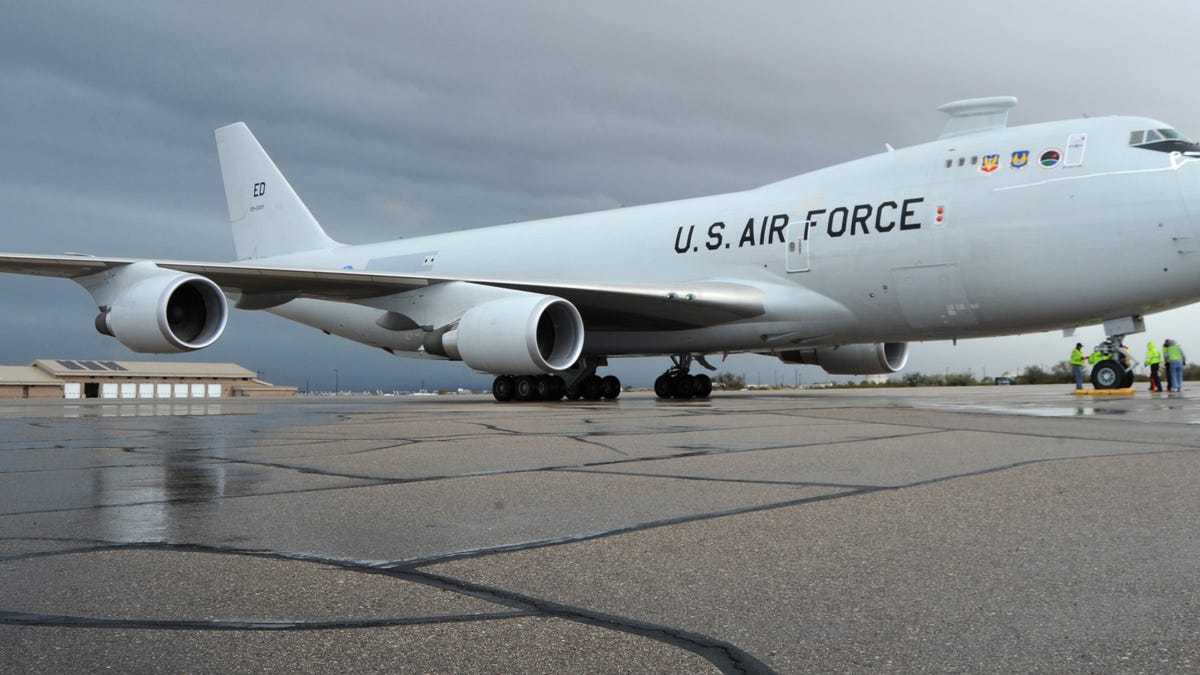Airborne Laser hits the off switch
The souped-up 747 was built to pack a "megawatt-class" laser and cut down enemy missiles before they could do any harm. But the funds ran dry, so it's off to the "Boneyard."
It was supposed to be a weapon of the future. Now the Airborne Laser is communing with the ghosts of aircraft past.
Earlier this month, the Airborne Laser, a seriously tricked-out Boeing 747-400 Freighter, arrived at Davis-Monthan Air Force Base in Arizona, where it has been consigned to a sprawling and dusty final resting place known as the "Boneyard" (the Air Force's Aerospace Maintenance and Regeneration Group, under its formal name).
Officially on the books as the YAL-1A Airborne Laser Test Bed, the big aircraft with the bulbous nose was designed to shoot down ballistic missiles. The idea was to catch a missile while it was still in the launch phase and thus most vulnerable, hitting it with a "megawatt-class" laser beam locked onto a pressurized part of the projectile long enough to compromise its structural integrity. Poof! There goes the threat.
The Airborne Laser did find some success on the test range on several occasions in 2010 and 2011 (see the Missile Defense Agency's full list), but by that point the writing was already etched on the wall: the Pentagon was pretty much done with this experiment in directed-energy weaponry. In 2009, Defense Secretary Robert Gates scrapped plans to build a second plane (the Air Force had once thought it might have as many as seven Airborne Lasers), and the one existing aircraft cruised to a lonely fate as an R&D effort only.
"The ABL program has significant affordability and technology problems, and the program's proposed operational role is highly questionable," Gates said at the time. That is, not only was the machinery too expensive and too complex, it was also pretty clear that it would be impractical to keep a 747 circling near someplace like Iran or North Korea, just waiting and watching.
The weapon at the core of the ABL -- which required the kind of space a 747 could provide -- was a chemical oxygen iodine laser, or COIL, that would be fired through the nose assembly. The aircraft also used two solid-state lasers for target acquisition and beam control.
In spreading the word about the demise of the Airborne Laser after nearly a decade's worth of work, the Air Force called the moment "the end of a historic era in airborne directed energy research," as the money ran out.
"The bottom line is the Airborne Laser test program is closing," Lt. Col. Jeff Warmka, the director of the ALTB Combined Test Force, said in a statement. "After very successfully accomplishing its key Missile Defense Agency Knowledge Points, the program transitioned into a science and technology effort in 2010. Over the past two years, MDA's Directed Energy Program Element continued to receive reduced appropriations. In consideration of the reduced funds, MDA began program closeout and awarded a contract for storage."
If nothing else comes out of the ABL's time in the Boneyard, where it'll be screened for "reutilization," perhaps it will one day at least get a fresh coat of paint, like some of the old birds in the slideshow below:


